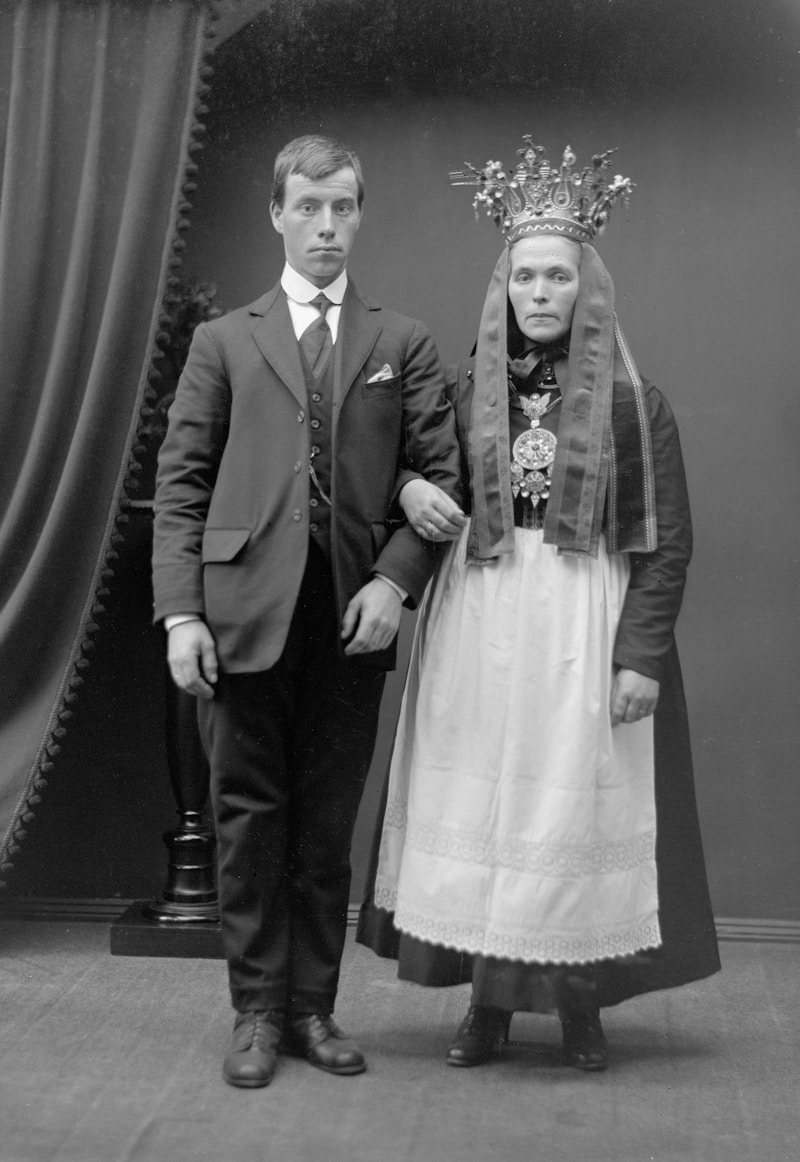The Evolution of Wedding Styles Through the Decades
The Evolution of Wedding Styles Through the Decades
Weddings are one of the most cherished celebrations, representing love and commitment between two individuals. Over the years, wedding styles have evolved significantly, reflecting cultural shifts, fashion trends, and societal norms. In this article, we will explore how wedding styles have changed through the decades, highlighting key trends, attire, and other vital elements that have shaped the way we celebrate love today.
The 1920s: The Rise of Elegance
The 1920s marked a significant turning point in wedding styles. Influenced by the flapper culture and Art Deco movement, weddings during this era were characterized by glamour and sophistication. Brides often wore intricate lace dresses paired with cloche hats, while grooms donned tailored suits complete with bow ties.

Key Features
| Bridal Attire | Lace dresses, cloche hats |
| Groom's Attire | Tailored suits, bow ties |
| Decor | Elegant floral arrangements, vintage table settings |
Weddings were often grand affairs, held at upscale venues with an emphasis on detailed decor and lavish receptions. The ritual of marriage began to transform into a more significant social gathering.
The 1930s and 1940s: The Era of Simplicity
The Great Depression and World War II drastically influenced wedding styles during the 1930s and 1940s. Couples opted for more modest ceremonies and simpler attire as economic conditions constrained spending.
Notable Trends
| Bridal Attire | Simple satin gowns, shorter lengths for practicality |
| Groom's Attire | Military uniforms, simple suits |
| Decor | Intimate gatherings, DIY decor |
Couples focused more on the meaning of the union rather than the extravagance of the event. Backyard weddings and intimate city hall ceremonies became popular.
The 1950s: A Return to Extravagance
Post-war prosperity brought a sense of optimism and a return to more elaborate wedding styles in the 1950s. The influence of Hollywood glamour played a significant role in shaping wedding trends during this decade.
Key Characteristics
| Bridal Attire | Ballgowns, strapless designs, longer veils |
| Groom's Attire | Classic tuxedos, bow ties, and cummerbunds |
| Decor | Extravagant floral displays, pastel color palettes |
Social events became more elaborate, with many couples opting for large church ceremonies followed by grand receptions featuring multi-tiered cakes and dancing.
The 1960s and 1970s: The Rise of Individualism
The 1960s and 1970s marked a period of social change and the rise of individualism, which was reflected in wedding styles. Couples began to personalize their celebrations, moving away from traditional norms.
Popular Trends
| Bridal Attire | Bohemian styles, vintage lace gowns, and colorful dresses |
| Groom's Attire | Casual suits, sometimes even denim |
| Decor | Outdoor weddings, unique themes, and diverse cultural elements |
Weddings embraced a more relaxed atmosphere, with many ceremonies occurring in gardens or on beaches, showcasing the couple's unique personalities and love stories.
The 1980s: Opulence and Glamour
The 1980s prioritized opulence and grandeur in weddings. The decade's fashion trends heavily influenced bridal styles, leading to extravagant ceremonies that mirrored the larger-than-life attitude of the era.
Defining Elements
| Bridal Attire | Big skirts, puffed sleeves, and long trains |
| Groom's Attire | Three-piece suits, bold colors |
| Decor | Luxurious fabrics, vibrant floral arrangements |
This era was renowned for lavish celebrations held in grand ballrooms with elaborate receptions, multi-tiered cakes, and extravagant floral decor.
The 1990s: A Blend of Tradition and Modernity
As the 1990s approached, weddings began to strike a balance between tradition and modernity. Couples embraced both classic elements and contemporary trends.
Key Features
| Bridal Attire | A-line gowns, shorter veils, and sophisticated details |
| Groom's Attire | Classic tuxedos with modern twists |
| Decor | Mix of elegant styles and personal touches |
Weddings became versatile, allowing couples to mix traditional vows with modern elements, resulting in unique and memorable ceremonies.
The 2000s: Personal Expression
The 2000s saw a shift towards personal expression in weddings. Couples focused on crafting ceremonies that reflected their unique styles and values.
Popular Trends
| Bridal Attire | Customized gowns, exotic fabrics |
| Groom's Attire | Creative suits, mix and match designs |
| Decor | Personalized favors, themed decor |
Destination weddings and themed ceremonies became popular, allowing couples to showcase their personalities and love for adventure through their wedding plans.
The 2010s and Beyond: Inclusivity and Technology
The last decade has seen weddings become more inclusive, with a focus on diversity and representation. Technology has also played a significant role in shaping modern weddings.
Defining Characteristics
| Bridal Attire | Diverse styles, including non-traditional colors |
| Groom's Attire | Varied styles, from classic to quirky |
| Decor | Eco-friendly options, technology integration |
The use of social media and online planning tools has transformed how couples share their wedding journey, allowing for greater engagement and creativity.
Conclusion
The evolution of wedding styles through the decades reflects broader cultural shifts and changing societal values. From the simplicity of the early 20th century to the personalized and inclusive celebrations of today, weddings have become a unique representation of love between couples.
Consideration of trends and evolving norms can help couples navigate their wedding planning journey. Whether you prefer the classic elegance of the past or the modern spontaneity of today, the key is to create a celebration that truly reflects your love story. Additionally, embrace new ideas while honoring beloved traditions to make your special day memorable. Remember to focus on what matters most: your love and commitment to each other.
As you plan your wedding, keep in mind the importance of making choices that feel right for you as a couple, ensuring that your special day is as unique as your love.
